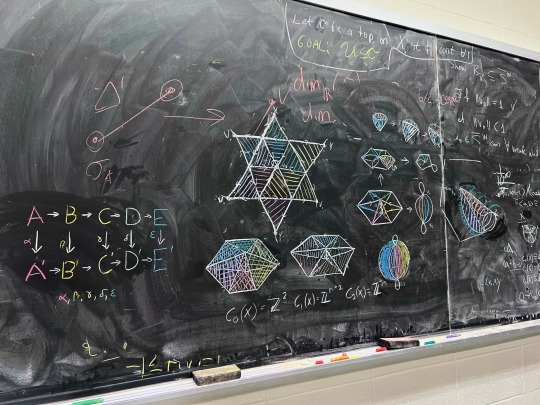Text

I had this position as white. I feel bad.
2 notes
·
View notes
Text
The closest we'll ever get is through markdown :(
LaTeX embeddings would be so nice. Messenger used to support it too and then that fucker Zucker got rid of it
can tumblr give fucking LaTeX support as a feature already instead of ai data scraping or whatever
293 notes
·
View notes
Text
Dynamical Systems
When we talk about dynamical systems, we broadly refer to the way a particular system evolves under certain conditions. For example, if you have a particle and you give it some terrain to roll around on, what path will it follow? If you have an electron and subject it to a magnetic field, what trajectory would it follow? Or if you impart forces on a block of water, how would the shape of the boundary change?
These are all types of questions that can be answered by dynamical systems, and involve a significant depth of analysis to truly understand their mechanics. (But truthfully, I've only ever been in it for the pictures).
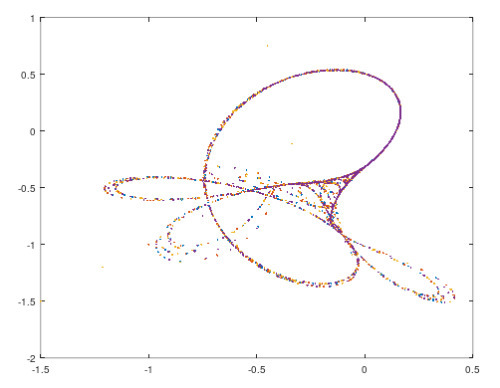
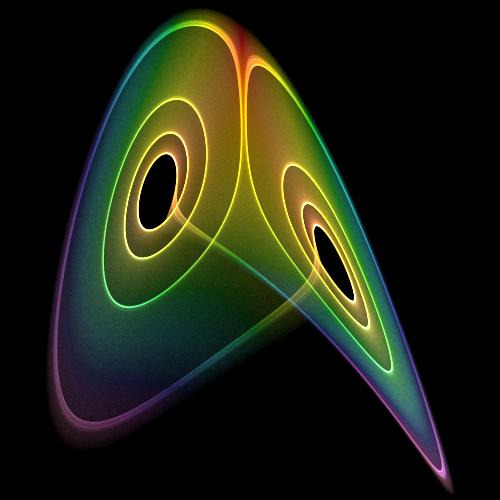
The Tinkerbell map The Lorenz Attractor
As usual, if anyone has any feedback or errata to point out, please do shoot me a message :). I'm still getting back into the groove of things with this so I might be missing out on stuff.
Some basic definitions
We have 2 different types of trajectories, discrete and continuous.
discrete time dynamics - this means that you have observations at discrete points in time. You take a snapshot at t=1, t=2, etc. Take the Tinkerbell map above for example. You start with a point, then apply some sort of rule, and you end up at the next point. Things happen in steps.
continuous time dynamics - this means that at each point, you prescribe a velocity (a speed and direction) in which a particle should move. So if a particle is located at (0,0) for example, in an arbitrarily short period of time, it would move in a particular direction. A good example of this is the Lorenz map, as shown in the right hand image.

The Tinkerbell Map - equations of motion

The Lorenz Map - equations of motion
NOTE: In the first case, we talk about where the next point explicitly, whereas in the second case, we talk about in how fast in a particular direction we will end up moving.
A brief discussion on derivatives

Here's a visual to explain - suppose that the blue line represents how far away you are from some particular location. The average velocity would be the slope of the green line. But the instantaneous velocity would be equal to the the slope of the yellow line.
The way we denote this derivative is as follows

The numerator describes the change in the y-values, the denominator describes the change in the x-values, and the ratio of this is the gradient (or the slope).
So in a nutshell, the average velocity represents a change in distance over a period of time, and instantaneous velocity represents a change in distance of an arbitrarily short period of time.
Where to from here?
From here, we'll introduce some broad notation around maps, orbits, and some terminology that underpin dynamical systems. If there's enough time, I'll also describe some other concepts regarding different types of orbits, and thereafter we'll get into some really cool stuff.
Anyway, that's it for now! Adios :)
19 notes
·
View notes
Text
i would have enjoyed math class more if i knew mathematicians had a fist fight over these imaginary numbers
114 notes
·
View notes
Text
That was a lot of chessposting. Have some quaternion julia sets, as a treat
These act as 3D slices of 4D extensions of julia sets. I believe this one is cubic in nature. To render these we use some math I dont understand from this blog to generate a distance estimator that can then be used to raymarch the sets. Raymarching is essentially marching along rays coming from the camera, only moving as far as we know we can move safely in any direction, until we hit something. This safe distance is where the distance estimator comes in. Anyways pretty pictures
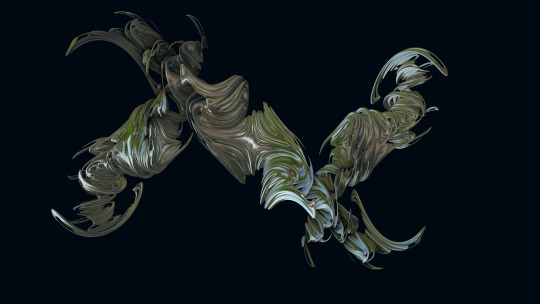


This one I have a 3D print of

And this one I've colored the slice of it based on the coloration of the corresponding 2D julia set
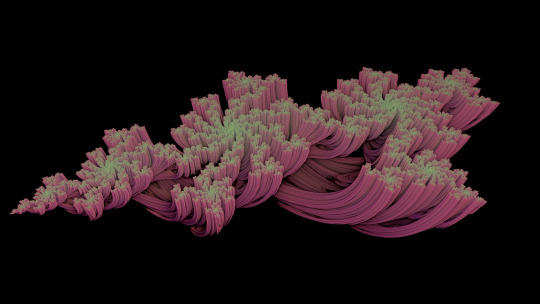
51 notes
·
View notes
Text
@blake447 I was able to code up something using python (specifically turtle) to generate this shape, here's what I was able to get for a string after 5 iterations of your algorithm

This is the code


I think as long as the angle you are rotating by is a multiple of 120, you'll end up with different orientations of your curve. In this case, the idea I used was
0->0, 1->1, 2->2:
Turn 0
0->1, 1->2, 2->0
turn left 240
Otherwise
turn left 480 (turn right 120)
Step once
I wonder if this could be extended to other dragon curves and fractals. Would love to hear your thoughts!

So in case anyone's following and seen my work with dragon and koch curves, and was curious about sierpinski's triangle, it can be represented with these sequences but unfortunately the process is more irregular so we cant pull the same tricks with binary sequences, at least in any manner that is immediately obvious.
Pictured above is a process where you double each element of the sequence, and pick a number to inject smaller triangles into, then repeat the process. With a bit of practice you can draw an eularian path that forms a sierpinski triangle.

If you wanna get really fancy you can vary the edge you break into smaller triangles each iteration, though its really, really hard to do on the fly
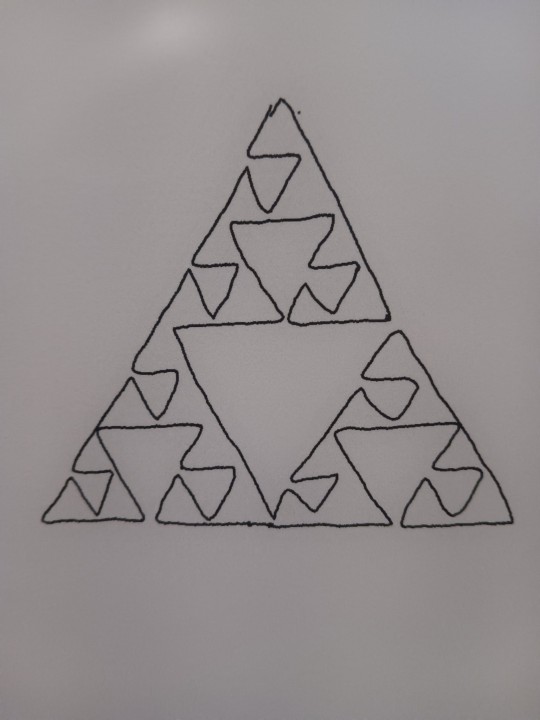
This is one i've always wanted to write a program to generate.
176 notes
·
View notes
Text

So in case anyone's following and seen my work with dragon and koch curves, and was curious about sierpinski's triangle, it can be represented with these sequences but unfortunately the process is more irregular so we cant pull the same tricks with binary sequences, at least in any manner that is immediately obvious.
Pictured above is a process where you double each element of the sequence, and pick a number to inject smaller triangles into, then repeat the process. With a bit of practice you can draw an eularian path that forms a sierpinski triangle.

If you wanna get really fancy you can vary the edge you break into smaller triangles each iteration, though its really, really hard to do on the fly

This is one i've always wanted to write a program to generate.
176 notes
·
View notes
Note
How can I fall in love with trigonometry?
I can't really give advice specifically for trigonometry but I can try to give some more broad advice. I also don't want to romanticise maths too much
I think a lot of the beauty in mathematics comes from seeing where all the connections are and seeing just how vast the applications can be and where do they come from. Depending on how far into mathematics you have gotten, these connections will either be easy or hard to understand, and it's very easy to just lose interest in it because the concepts seem to robotic or difficult to master or just completely useless.
But I'll leave it with you to think about the applications of trigonometry and have a read for where it can be used. An excellent start is Fourier Transforms, which in turn is used in a lot of different areas ranging from signal processing to differential equations.
But just don't give up on it, keep pushing and asking for help when you hit a concept that doesn't make sense
9 notes
·
View notes
Text
Effortpost registry
Graphs as presheaves 3: subobject classifiers; 19 oct 2023
Effortpost registry; 18 oct 2023
Graphs as presheaves 2: limits and colimits; 11 oct 2023
Hydrogen bomb vs. coughing baby: graphs and the Yoneda embedding; 7 oct 2023
Extending the D ⊣ U ⊣ I adjunction sequence; 23 sep 2023
The Riemann rearrangement theorem and net convergence; 18 sep 2023
Thoughts on the axiom of choice; 18 feb 2023
Topological spaces and simple graphs as neighbourhood spaces; 15 feb 2023
The exponential function applied to sets; 24 dec 2022
But IS the empty space connected?; 11 nov 2022
Monads monads monads; 8 nov 2022
Calculating what the triangle identities mean for a bunch of adjunctions and being amazed when it works every time; 7 nov 2022
Defining the Lebesgue integral as a net limit; 27 jul 2022
Rambles about describable sets; 28 oct 2021
Functions with cycling derivatives; 30 aug 2021
Why the rationals have zero length; 31 may 2021
An infinite cardinal valued random variable; 30 may 2021
A field-based functor; 20 mar 2021
Generalized sides; 13 mar 2021
Rambles about metric convexity; 22 feb 2021
Wiggle function convergence; 28 jan 2021
Rambles about infinity; 5 sep 2020
Generalized golf; 24 jun 2020
Rambles about continuousifying series; 10 may 2020
Rambles about being closed under exponentiation; 7 may 2020
Rambles about the groups that come with fields; 3 may 2020
A compilation of donutified functions; 17 mar 2020
Rambles about arithmetic functions; 24 jan 2020
Graphing real functions on a torus >:); 29 nov 2019
62 notes
·
View notes
Text
the cotangent bundle (differential forms) is the feminine side of calculus-on-manifolds; the tangent bundle (vector-fields) is the masculine side.
Shing-Shen Chern, via Richard Montgomery
31 notes
·
View notes
Text
“It doesn’t involve that much math” well then you aren’t looking hard enough!
205 notes
·
View notes
Text
I didn't wanna derail the other post but I still wanna spread some love for my favourite subject...
Reblog if you've ever felt genuine joy or excitement from doing and/or thinking about math
4K notes
·
View notes
Text

108 notes
·
View notes
Text

That was the most underwhelming identity ever...
Imagine fucking around with this identity only to find out its just this...
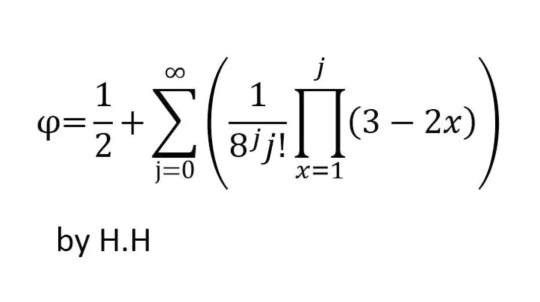
a fascinating identity found on facebook (not all facebook is bad it seems)
31 notes
·
View notes

